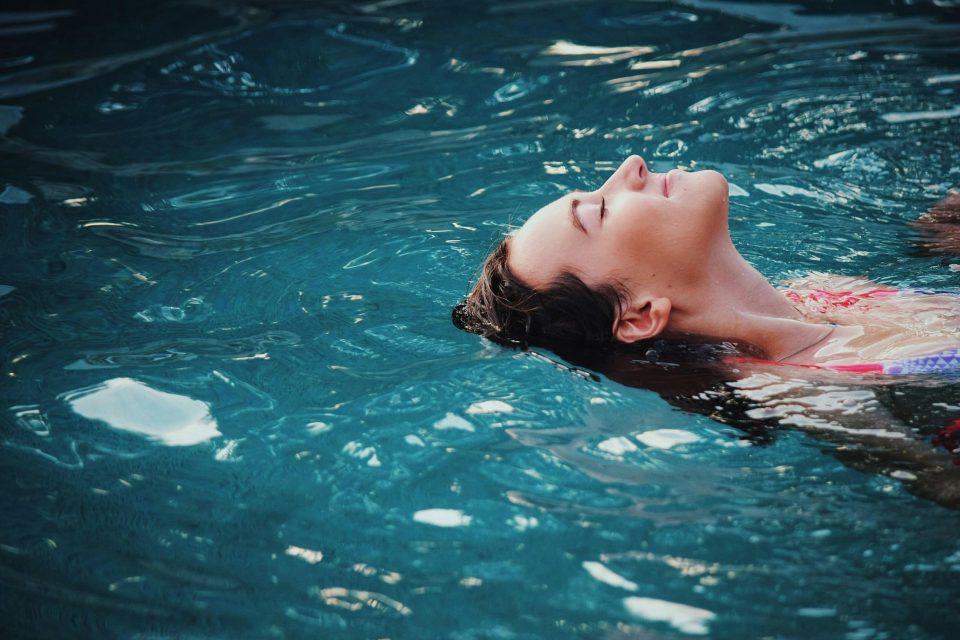In the tranquil embrace of water, where gravity loosens its grip and the world above fades into a gentle hum, lies a transformative secret. Swimming, often seen as a serene escape from the hustle and bustle of daily life, is more than just a refreshing dip—it is a powerful ally in the pursuit of endurance and muscle strength. This article dives beneath the surface to explore how the rhythmic strokes and fluid motions of swimming sculpt the body and fortify the spirit, offering a holistic approach to fitness that engages every muscle while building resilience. Join us as we journey through the science and stories that reveal why swimming is the hidden gem in the world of physical training, a discipline that harmonizes strength with stamina in the most elemental of environments.
Building Stamina Through the Rhythms of Water
Immersed in the aquatic embrace, every stroke and kick propels you through the water, weaving a tapestry of strength and resilience. Swimming offers a unique blend of aerobic and resistance training, which enhances cardiovascular health while simultaneously sculpting muscles. The water’s natural resistance challenges the body, compelling it to build endurance and muscle strength over time. Unlike land-based exercises, swimming provides a full-body workout, engaging various muscle groups and improving flexibility without the harsh impact on joints. This harmonious dance with the water fosters a balanced physique and bolsters stamina, making it a preferred choice for those seeking a comprehensive fitness regimen.
- Low-Impact Exercise: Swimming reduces stress on the body, ideal for all ages.
- Engages Multiple Muscle Groups: Tones arms, legs, core, and back muscles.
- Enhances Cardiovascular Fitness: Boosts heart health and lung capacity.
- Improves Flexibility: Increases range of motion through fluid movements.
With every lap, the rhythmic motion of swimming nurtures a meditative state, allowing the mind to unwind while the body strengthens. This synergy between mind and body is a cornerstone of building endurance, as mental fortitude plays a pivotal role in sustaining physical exertion. As you glide through the water, the rhythmic sounds and repetitive motions cultivate focus and determination, gradually increasing your stamina. Whether you’re a seasoned swimmer or a beginner, embracing the water’s rhythm can transform your fitness journey, fostering not just physical prowess but also mental resilience.

Harnessing Aquatic Resistance for Enhanced Muscle Power
Incorporating the natural resistance of water into your fitness routine can lead to significant gains in muscle power and endurance. Swimming requires continuous movement against the water’s resistance, which effectively challenges and strengthens various muscle groups. Unlike traditional weightlifting, where the resistance is often static, the fluid dynamics of water ensure that muscles are engaged in a balanced and comprehensive manner. This unique environment promotes muscle endurance as swimmers repeatedly push and pull through water, enhancing both strength and stamina over time.
Some key benefits of aquatic resistance include:
- Low-impact exercise: The buoyancy of water reduces strain on joints and muscles, making it an ideal workout for individuals of all ages and fitness levels.
- Full-body workout: Swimming engages multiple muscle groups simultaneously, including the core, arms, and legs, promoting balanced muscle development.
- Increased flexibility: The range of motion required for different strokes helps improve joint flexibility and overall mobility.
- Cardiovascular health: Regular swimming sessions enhance heart and lung capacity, contributing to improved cardiovascular endurance.

Optimizing Swim Techniques for Maximum Endurance Gains
When it comes to refining your swimming technique for better endurance, it’s all about focusing on key elements that make your strokes more efficient and less taxing on your body. Consider incorporating these essential tips into your practice sessions:
- Streamline Your Body Position: Aim to reduce drag by keeping your body as horizontal as possible. A streamlined position minimizes resistance, allowing you to glide through the water with ease.
- Master Your Breathing Rhythm: Developing a consistent breathing pattern is crucial. This not only ensures that your muscles receive the oxygen they need but also helps maintain a steady pace without unnecessary fatigue.
- Focus on Stroke Efficiency: Instead of increasing the number of strokes, work on maximizing the distance covered with each one. Efficient strokes conserve energy, enhancing your ability to sustain longer swimming sessions.
Additionally, strengthening the core muscles plays a pivotal role in maintaining endurance. A robust core supports proper alignment and balance, leading to improved performance in the water. Consider integrating dryland exercises like planks and rotational movements into your routine to bolster core strength. By honing these techniques and focusing on building endurance, swimmers can experience significant gains in both stamina and muscle strength, propelling them to new heights in their aquatic pursuits.

Crafting a Balanced Swim Routine for Comprehensive Strength Development
To harness the full potential of swimming for enhancing both endurance and muscle strength, it’s essential to devise a well-rounded routine that incorporates a variety of strokes and techniques. By doing so, swimmers can target different muscle groups while also boosting cardiovascular health. Here are some key components to consider when structuring your swim workouts:
- Mix Different Strokes: Each swimming stroke activates distinct muscles. Incorporate a mix of freestyle, backstroke, breaststroke, and butterfly to ensure a comprehensive workout.
- Interval Training: Incorporate intervals of high-intensity sprints followed by recovery periods. This not only improves cardiovascular endurance but also aids in muscle growth.
- Incorporate Drills: Focus on specific drills for technique improvement. Drills can enhance stroke efficiency, leading to better performance and muscle engagement.
- Utilize Equipment: Use paddles, kickboards, or fins to challenge different muscle groups and enhance strength. These tools can add resistance, making your muscles work harder.
By integrating these elements into your swimming routine, you can create a balanced program that not only enhances muscle strength but also boosts endurance, ensuring a well-rounded approach to fitness.

